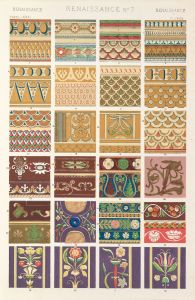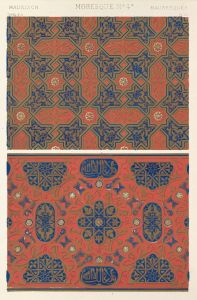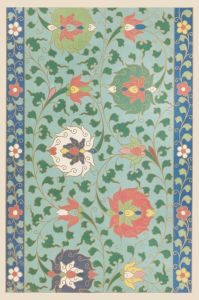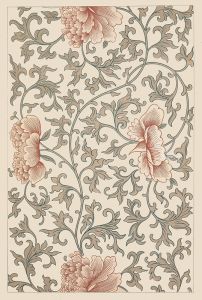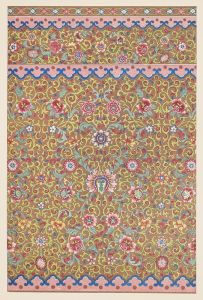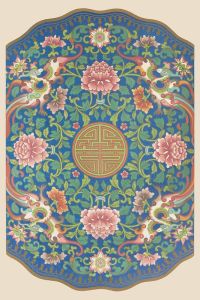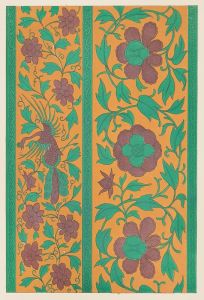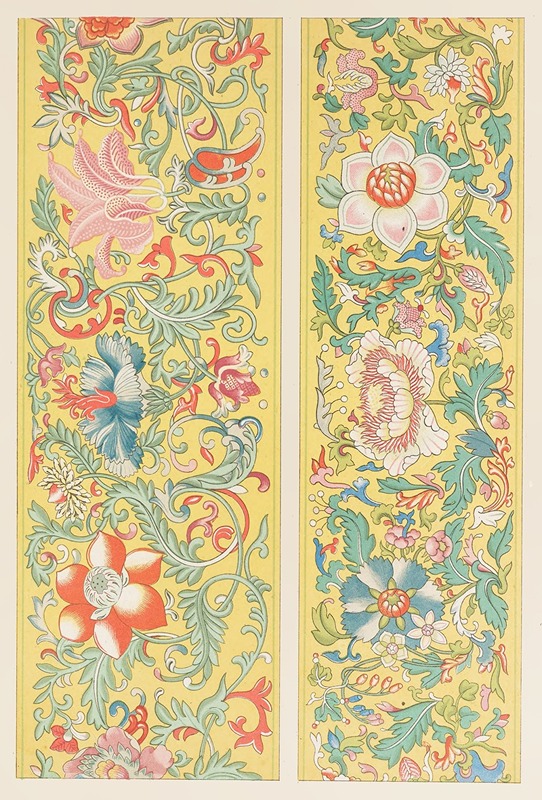
Examples of Chinese ornament, Pl.48
A hand-painted replica of Owen Jones’s masterpiece Examples of Chinese ornament, Pl.48, meticulously crafted by professional artists to capture the true essence of the original. Each piece is created with museum-quality canvas and rare mineral pigments, carefully painted by experienced artists with delicate brushstrokes and rich, layered colors to perfectly recreate the texture of the original artwork. Unlike machine-printed reproductions, this hand-painted version brings the painting to life, infused with the artist’s emotions and skill in every stroke. Whether for personal collection or home decoration, it instantly elevates the artistic atmosphere of any space.
"Examples of Chinese Ornament, Pl.48" is a plate from the influential design book "The Grammar of Ornament," authored by Owen Jones and first published in 1856. Owen Jones was a British architect and designer known for his pioneering work in the study of color theory and ornamental design. His book, "The Grammar of Ornament," is a comprehensive collection of decorative arts from various cultures around the world, aiming to provide a systematic study of design principles and aesthetics.
Plate 48 specifically focuses on Chinese ornamentation, showcasing the intricate and symbolic designs characteristic of Chinese art. The plate is part of a larger section dedicated to Chinese design, which Jones admired for its harmony, balance, and use of color. Chinese ornamentation is known for its use of motifs such as dragons, phoenixes, clouds, and floral patterns, often imbued with symbolic meanings. These motifs are typically rendered in vibrant colors and are used in various applications, including textiles, ceramics, and architecture.
Jones's work was significant in the 19th century as it introduced Western audiences to the richness and diversity of global design traditions. His documentation of Chinese ornamentation was part of a broader Victorian-era fascination with the arts and crafts of Asia, which influenced Western design and architecture. The detailed illustrations in "The Grammar of Ornament" were based on Jones's extensive travels and studies, as well as his collaboration with other scholars and artists.
In "Examples of Chinese Ornament, Pl.48," Jones presents a variety of patterns and motifs that exemplify the elegance and complexity of Chinese design. The plate likely includes examples of traditional Chinese symbols, such as the lotus flower, which represents purity and enlightenment, or the dragon, a symbol of power and good fortune. The use of symmetry and repetition in these designs reflects the Chinese aesthetic principles of balance and harmony.
Jones's work was not merely an artistic endeavor but also an educational one. He sought to provide designers and architects with a rich source of inspiration and a deeper understanding of the principles underlying ornamental design. His emphasis on the importance of studying historical and cultural contexts in design remains influential in contemporary design education.
"The Grammar of Ornament" has been reprinted numerous times since its initial publication, and it continues to be a valuable resource for designers, historians, and anyone interested in the decorative arts. Plate 48, along with the rest of the book, serves as a testament to the enduring appeal and significance of Chinese ornamentation in the global history of design.





